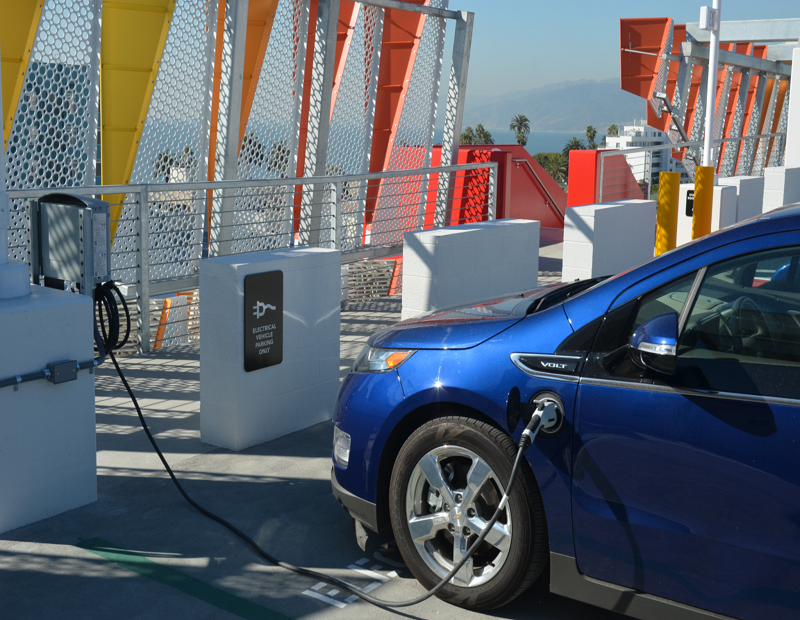Jump-Starting the Future of Battery Storage
Commitment from multiple stakeholders is crucial if the technology is to fulfill its potential, a new study contends.
By Paul Rosta

Among other benefits, advancing battery storage programs would benefit efforts to expand the use of electric vehicles. (Constance Farrell/City of Santa Monica, Calif.)
What’s the role of storage batteries in the U.S. energy future?
So far, the technology offers vast yet largely untapped potential, contends a comprehensive study released last month by the Center for Clean Energy (CEG), a nonprofit research, education and advocacy organization.
“If clean energy and climate activists and their funders do not develop a strategic focus on battery storage, they will miss what could be this generation’s greatest clean energy opportunity,” the report warns.
Entitled “Jump-Start: How Activists and Foundations Can Champion Battery Storage to Recharge the Clean Energy Transition,” CEG’s report identifies a wide range of areas where battery storage can make a contribution: maximizing solar power, replacing expensive, high-emission peaker plants, and boosting resilience against power outages. Moreover, a wide variety of storage projects coming on line could inject renewable energy into the grid and reduce transmission and capacity costs, the study asserts.
CEG also cites studies indicating that storage technology could be cost-competitive with conventional gas-fired peaking plants by 2025 and that storage could supply half of the estimated 20 gigawatts of additional peaking capacity that the U.S. will need over the next decade.
For commercial electricity customers, the expansion of storage technology could offer significant benefits. A study conducted jointly by CEG and the National Renewable Energy Laboratory estimates that battery storage could help some 5 million commercial customers to reduce their electric consumption significantly. The finding was based on a nationwide study of utility charges for peak demand electricity usage. To date, however, “only a small portion of this potential market has been realized, with no more than a few thousand commercial systems deployed,” the report notes.
Like solar energy two decades ago, storage faces multiple hurdles to adoption. Leading the list are information gaps regarding technology options, costs, safety, and benefits; a dearth of coordinated federal and state policies to help reduce costs and foster market uptake; and “a lack of constancy across available incentives, financing options, and business models.”
Federal tax credits, mandates, incentives, and other programs are helping to shape the direction of storage market development, but the report urges more supportive policies in order to scale up the technology sufficiently to address climate change as well as pressing energy needs.
CEG also calls for new resources to advance the scale-up of solar-plus-storage installations at low- and middle-income multifamily communities. “New financial resources and interventions are needed to address financing gaps and leverage external investment so that projects can be implemented, and portfolio owners and project developers will commit their resources to developing prospective projects.”
Support is needed for organizations that have demonstrated an ongoing commitment to developing their capacity to build project pipelines.
“A uniform, scalable financing product for LMI projects is not immediately apparent at this stage in the market’s development,” the report states. “Instead, support should be given to project developers and financial intermediaries that are pursuing flexible ‘pilot’ financing approaches for deploying solar+storage systems.”
CEG offers other recommendations to hasten the spread of storage technology. Utilities, especially municipal utilities and electric co-ops, should be encouraged to consider energy storage as a cost-saving alternative to conventional technologies, whether through regulations or state grants and incentives.







You must be logged in to post a comment.